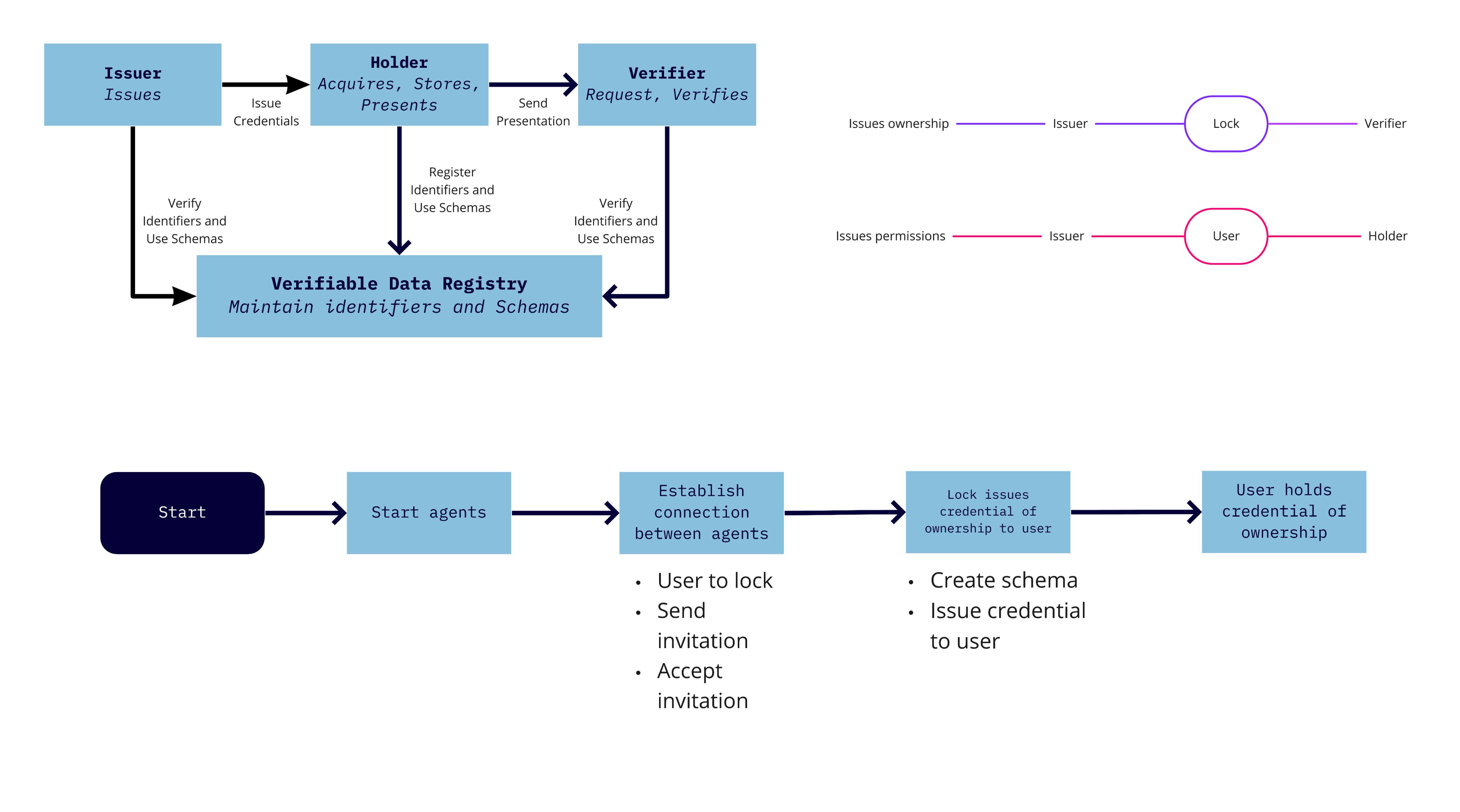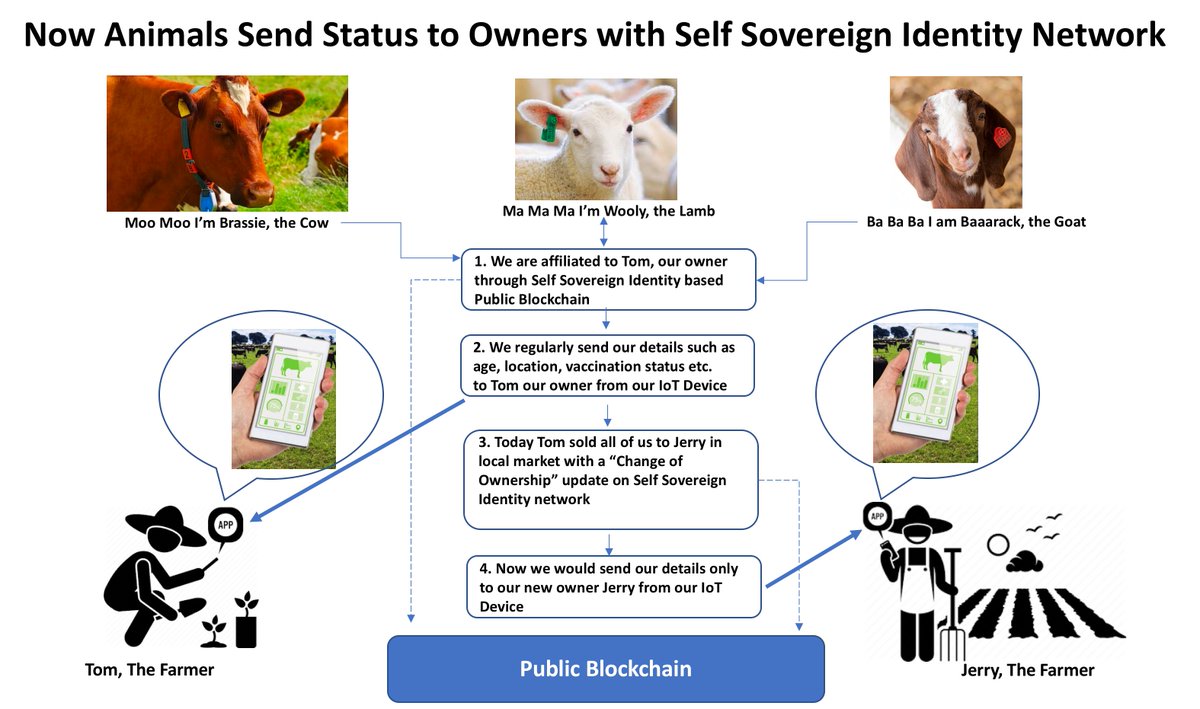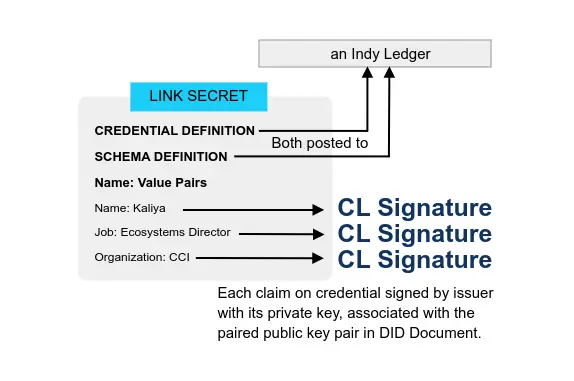Internet of Things (IOT)
Explainer
- [ITN, European Commission] Why is Trusted Identity Important in IoT Commerce? 2022-07-14 MOBI
This technology has enormous implications for consumers and organizations alike. For consumers, it spells a more seamless way of interacting with the devices used in day-to-day life. Likewise, many industries across the globe are increasingly turning to IoT to automate business processes, support the development of interoperable value chains, and enhance asset management.
-
Why Machines Need Self-Sovereign Identities 2021-10-18 Peaq
As the world becomes even more connected and more machines are hooked up to the internet, the ability for machines to move, trade and interact securely and efficiently becomes increasingly important to life and business. Today’s centralized networks do not enable this. Machines today exist on closed, permission-based environments which massively limit which other machines can be interacted with, what machines can do and where they can go.
-
Self-Sovereign Identity and IoT – insights from the Sovrin Foundation 2021-09-21 Insureblocks
Michael Shea is the Managing Director of the Dingle Group and the Chair of Sovrin Foundation’sSSI in IoT Working Group. In this podcast we discussed the white paper he authored on Self Sovereign Identity and IoT. To explain the opportunities SSI can provide to IoT, Michael introduces us to three profiles: Jamie (machine to person), Bob (machine to machine) and Bessie the cow (digital twin).
-
Toothbrush Identity 2021-09 Phil Windey
Identity finds its way into everything—even toothbrushes. Careful planning can overcome privacy concerns to yield real benefits to businesses and customers alike.
-
Smart Property 2021-08 Phil Windley
Smart property is much more than the anemic connected things we have now. Smart property imagines a world where every thing participates in digital communities and ecosystems, working through programmable agents under the owners control.
-
Digital Twins and Self-Sovereign Identity: Build the next generation of Simulation with privacy preservation 2021-07-30 IOT Practicioner
Managing IoT devices and user identities as well as the relationships among various devices and their digital twins face significant challenges. First, a lack of Identity Credential and Access Management (ICAM) standards for IoT creates proprietary standards and a lack of interoperability. Second, the operational lifecycle of IoT devices complicates integration of traditional ICAM. Lastly, ICAM technology must adapt to the proliferation of connected devices. This evolution requires a digital trust framework and the decentralized architecture of Self-Sovereign Identity (SSI).
-
Alternatives to the CompuServe of Things 2021-07 Phil Windley
The current model for connected things puts manufacturers in between people and their things. That model negatively affects personal freedom, privacy, and society. Alternate models can provide the same benefits of connected devices without the societal and personal costs.
-
Decentralized identity can bring the analog world into the digital one 2021-06-20 Cointelegraph
DID does not require analog objects to become digitized, and it does not need expensive sensors or hi-tech tags to work correctly. Instead, it offers an affordable, reliable and versatile way to take offline items out of the digital blindspot.
-
Relationships in the Self-Sovereign Internet of Things 2020-12 Phil Windley
DIDComm-capable agents provide a flexible infrastructure for numerous internet of things use cases. This post looks at Alice and her digital relationship with her F-150 truck. She and the truck have relationships and interactions with the people and institutions she engages as she co-owns, lends and sells it. These and other complicated workflows are all supported by a standards-based, open-source, protocol-supporting system for secure, privacy-preserving messaging.
- [Video] Distributed Ledger Technologies, IAM, and the Truth in Things 2019-06-27 Identiverse Robert Brown
Safety and security rests with all involved in authorizing updates, how and when they are applied as well as the right to repair when Things are no longer officially supported. Shared device lifecycle assurance is the basis for verifiable service histories of Things which give data provenance. When data can be proven to originate from reliable sources, its value increases while reducing the risk of using it. Enabling third parties to build value from data would unlock the true value of IoT which in turn could fund its upkeep. This talk will outline how identity and shared ledger technology have key roles to building Truth in Things for a sustainable IoT.
-
Machine identity - DIDs and verifiable credentials for a secure, trustworthy and interoperable IoT - Mrinal Wadhwa 2019-04-03 SSI Meetup presentation
Mrinal Wadhwa, CTO of Ockam, will talk about how Decentralized Identifiers, Verifiable Credentials, and Decentralized Key Management enable highly secure and reliable systems of connected devices.
Development
-
Juicy Telemetry 2022-04-04 Wilder Team
I was in a Sovrin IoT call when I heard the phrase “juicy telemetry.” A digital twins product leader was bemoaning all the really good data held back by the manufacturers of equipment. Data they needed to properly model their twins, to keep them current, to validate their assumptions. For good and bad reasons, the makers of wind turbines and cars and ship engines and weather sensors choose to hide data.
-
Easier IoT Deployments with LoraWan and Helium 2022-04 Phil Windley
Unlike a Wifi network, you don’t put the network credentials in the device, you put the devices credentials (keys) in the network. Once I’d done that, the sensor started connecting to hotspots near my house and transmitting data. Today I’ve been driving around with it in my truck and it’s roaming onto other hotspots as needed, still reporting temperatures.
Project
-
Decentralized Identity of Things 2022-02-11 Winner Microsoft Decentralized Identity Hackathon
In a real world scenario we anticipate a software based wallet for Decentralized Identity of Things. That would allow automation of online stores to obtain verifiable credentials programmatically.
-
DIDoT - DID of Things. Decentralized Identity of Things 2022-01-31 Devpost
Allergen management in food shopping. Based on the concept of ‘things’ having verifiable credentials. […] Our proposed solution requires a virtual wallet that can be orchestrated programmatically. We discussed how other self sovereign solutions have this capability and confirmed with the AAD Verifiable Credentials hackathon support team that this capability is not available.
-
students from @HU_Utrecht are using Aries Framework JavaScript for smart locks. 2021-05-19 Animo
Devices
-
Rugged Identity: resilience for Identity of Things to bad latency, signal, power, physical integrity. Mars, war zones, bad neighbors, Great Firewalls. 2021-05-06 Phil Wolff
Problem: So, what happens when you can’t call home to conduct an identity conversation? You’re on Mars and the latency is long. You’re in Haiti and the bandwidth is very limited during a storm. You’re in a war zone and your signal is noisy due to interference.
Rugged Identity is hoped-for resilience from very long latency, noisy signal, low bandwidth, interrupted connections, very low power computing and radio, power outages, and attacks on physical integrity like device tampering.
-
In 2021, #RuggedIoMD becomes an #IIoT category 2020-12-23 Wider Team
So there’s demand for a new category of IoT and #IoMD that survives and thrives despite these challenges. Very low power consumption. Lots of storage and caching to hold on through power outages. Ruggedized for use outside clinics. Easy and cheap to field-repair. Lots of smarts inside so they work without an internet tap. Many flavors of connectivity to exploit opportunities as they knock. Open sourced, the better to adapt to new and unplanned problems.
Organization
-
LFPH tackles the next frontier in Open Source Health Technology: The rise of Digital Twins 2022-08-29 Linux Foundation Public Health
To create a pairing between the digital world and the real world, a digital twin leverages real time data, such as smart sensor technology, coupled with analytics, and often artificial intelligence (AI) in order to detect and prevent system failures, improve system performance, and explore innovative uses or functional models.
-
SSI In IoT, The SOFIE Project 2021-04-06 The Dingle Group
For the 22nd Vienna Digital Identity Meetup* we hosted three of the lead researchers from the EU H2020 funded The SOFIE Project. The SOFIE Project wrapped up at the end of last year a key part of this research focused on the the use of SSI concepts in three IoT sectors (energy, supply chain, and mixed reality gaming) targeting integrating SSI in without requiring changes to the existing IoT systems.
-
Digital Twin Consortium
Digital Twin Consortium drives the awareness, adoption, interoperability, and development of digital twin technology. Through a collaborative partnership with industry, academia, and government expertise, the Consortium is dedicated to the overall development of digital twins. We accelerate the market by propelling innovation and guiding outcomes for technology end-users.
MOBI
-
Self-Sovereign Digital Twins 2022-07-08 MOBI
A Citopia Self-Sovereign Digital Twin™ (SSDT™) is a digital twin whose controller has the ability to participate as an autonomous economic agent in trusted Web3 transactions.
-
Battery Passport and the Battery Self-Sovereign Digital Twin 2022-09-28 MOBI
Similarly, a battery passport is nothing but a presentation of data points about a particular battery – who manufactured it, its physical and chemical composition, its current state of health, whether it was refurbished or repurposed from another battery, and so on.
-
MOBI Web3 Technology Stack Mobi
A Self-Sovereign Digital Twin™ (SSDT) is a digital twin which is anchored in a decentralized trust network using W3C’s DIDs)Standard (for MOBI’s community, this is the Integrated Trust Network, or ITN). By using the SSDT and W3C’s VC Standard, the controller of the SSDT can participate as an autonomous economic agent in trusted transactions through issuing VCs and Verifiable Presentations (VPs). For MOBI’s community, this is done using Citopia Marketplace. Citopia utilizes the network effect and Zero-Knowledge (ZK); allows for the onboarding of SSDT; and enables VCs and VPs.
Company Stories
-
More Security in the Internet of Things – Thanks to ETO 2022-09-16 ETO github
The ETO GRUPPE has set itself the goal of automating communication in the Internet of Things (IoT) and, on top of that, making it more secure against access and manipulation. To achieve this, these “things” - machines, devices or vehicles - must first be given a unique identity. The solution of the innovative corporate group consists of a new type of network and authentication processes that have what it takes to revolutionize the way we use the Internet today. ETO uses a network of distributed digital identities (DIDs) and verifiable credentials (VCs). A side benefit from the perspective of human Internet users: they regain data sovereignty over their personal data. The ETO solution will enable secure logins on both the Internet and the Internet of Things (IoT)
-
Trust but Verify 2022-04-28 Liminal Podcasts
Peter Padd, Co-Founder & CEO at Fortifyedge shares how he’s built Zero Trust authentication software that provides IoT device OEM’s with password-free authentication utilizing Tiny Machine Learning at the edge.
-
Introducing Peaq ID - Self-Sovereign Identity For Machines 2022-01-31 Peaq
Self-Sovereign Machine Identities (SSMIs) are digital identities that enable vehicles, machines, robots and devices to identify themselves with each other, with people and with their environment. What makes them special is that they’re decentralized identities; they enable direct, peer-to-peer identification and interaction without being dependent on centralized third-parties.
-
Capitalizing on Self-Sovereign Identity for Machines 2021-01-05 Venafi
By providing a means to globally define an indisputable link between a machine and its machine identity across different sites, networks and businesses, we can secure IoT like never before.
The filancore integration for Verifiable Credentials is available now. You can learn more from the Venafi Marketplace.
Infographic
-
Now Animals too can have their own #decentralizedidentity to help them send their status updates 2021-01-09 Debajani Mohanty
to the rightful owner from their #IoT devices. #Decentralized #digitalidentity for #IoT devices would lead to #SmartFarming
Concern
-
#ResistIoT: IoT as a medium for surveillance Wider Team 2021-04-21
- Clinical technology as workplace surveillance. Hospital providers talk about their frustration with connected technologies because it feels like their every motion is being monitored and tracked, used by bosses to evaluate their speed and cost efficiency.
- Civic technologies as government surveillance. From Oakland’s corner traffic cameras leading to mass rallies to Boston Police tests and NYPD robot dogs, IoT is deep in the creepy depths of the uncanny valley. 2019-11-26
- Consumer technology as commercial surveillance. Alexa, Google, and Apple know too much about you and use it to sell adjacent services.
Paper
- [Presentation] IoT Swarms + SSI in constrained networks 2021-07-21 source - paper Geovane Fedrecheski, Laisa C. P. Costa, Samira Afzal, Jan M. Rabaey, Roseli D. Lopes, Marcelo K. Zuffo
One of the challenges identified by this last paper is the overhead of using SSI, which poses a challenge for adoption on constrained IoT networks. For example, while the Long Range (LoRa) communication, often used in IoT systems, only allows payloads of up to 240 bytes, a single DID Document typically occupies 500 bytes or more. Similarly, messages using DIDComm tend to use at least 1 kilobyte, which prevents its use on constrained networks.
Figure 1. Binary versions of DIDComm and DID Documents are needed to allow transmission in LoRa networks. The payload, in blue, is a DID Document. The overhead, in orange, is the protocol overhead due to the message signature.A low-overhead approach for self-sovereign identity in IoT We present a low-overhead mechanism for self-sovereign identification and communication of IoT agents in constrained networks. Our main contribution is to enable native use of Decentralized Identifiers (DIDs) and DID-based secure communication on constrained networks, whereas previous works either did not consider the issue or relied on proxy-based architectures. We propose a new extension to DIDs along with a more concise serialization method for DID metadata. Moreover, in order to reduce the security overhead over transmitted messages, we adopted a binary message envelope. We implemented these proposals within the context of Swarm Computing, an approach for decentralized IoT. Results showed that our proposal reduces the size of identity metadata in almost four times and security overhead up to five times. We observed that both techniques are required to enable operation on constrained networks.
-
Self-Sovereign Identity for IoT environments: A Perspective 2020-03-11 Geovane Fedrecheski, Jan M. Rabaey, Laisa C. P. Costa, Pablo C. Calcina Ccori, William T. Pereira, Marcelo K. Zuffo
This paper analyses the concept of Self-Sovereign Identity (SSI), an emerging approach for establishing digital identity, in the context of the Internet of Things (IoT). We contrast existing approaches for identity on the Internet, such as cloud-based accounts and digital certificates, with SSI standards such as Decentralized Identifiers (DIDs) and Verifiable Credentials (VCs). To the best of our knowledge, this is the first thorough comparison of these approaches. The benefits and challenges of using DIDs and VCs to identify and authenticate IoT devices and their respective users are discussed. In the end, we establish that SSI, with its owner-centric, privacy-aware and decentrailized approach, provides a viable and attractive option for secure identification of IoT devices and users.
-
Self-Sovereign Identity for IoT Devices 2019-06-29 Nataliia Kulabukhova, Andrei Ivashchenko, Iurii Tipikin, and Igor Minin
in our point of view, a lot of development groups are working in parallel on the similar topics, yet it is not clear what is going on inside. In this paper we will try to define the differences and discuss both pros and cons of using such commonly known technologies as Sovrin based upon the Hyperledger Indy technology, Civic, Jolocom, uPort and some others. Besides, we’ll tackle the idea of using the SSI for inanimate object and how it can be constructed in this way.






